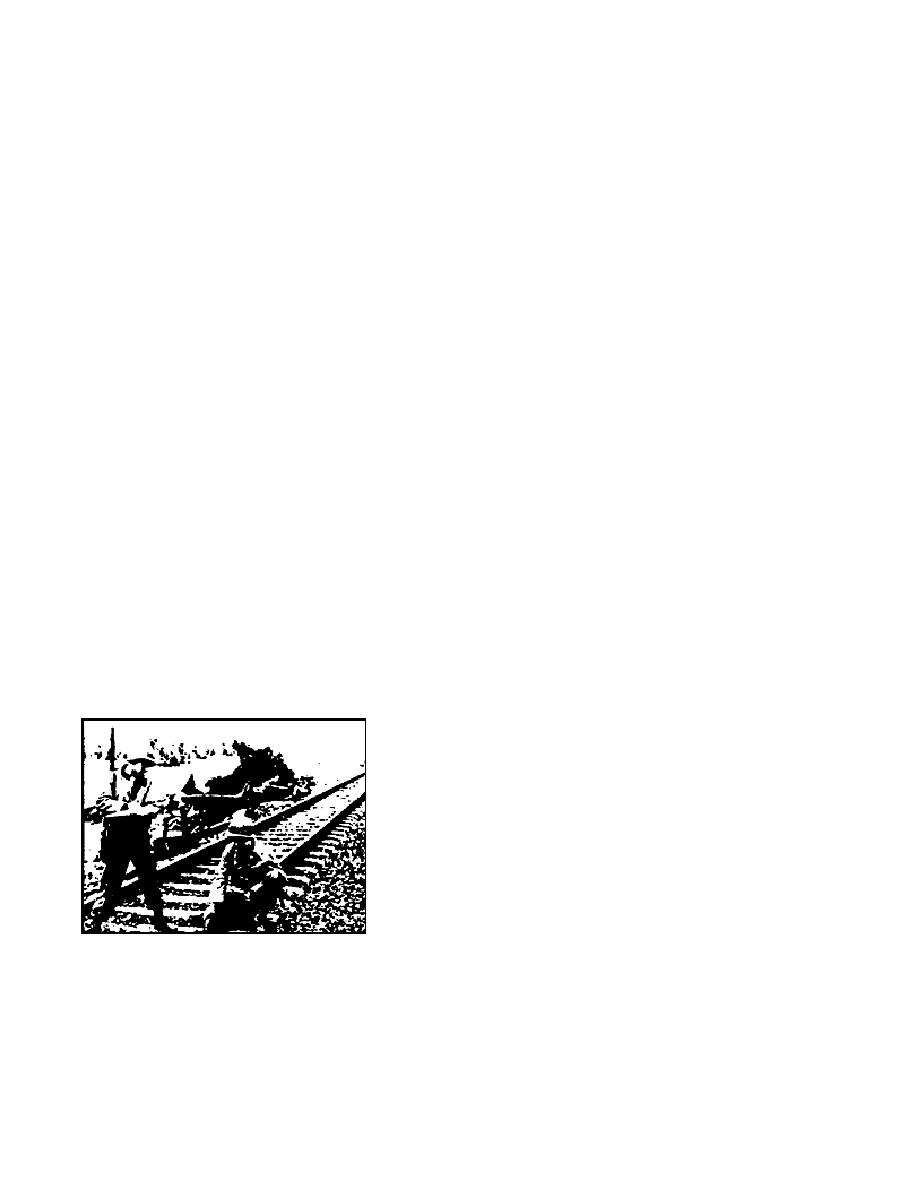
usually blow up or tear up as much of the rail lines, facilities, and
equipment as they can to deny the advancing forces immediate use of
the railroads. As soon as possible after our military forces are
engaged with the enemy, the rail planning moves from the ZI to the
theater.
1.3. PLANNING IN A THEATER OF OPERATIONS
The staff and planning functions for rail operations in a
theater are the responsibility of the commander of the highest
echelon of TRS command in the theater. The railway plan he develops
is integrated into the overall movements plan for the theater.
As stated in the preceding paragraph, the broad plan developed
in the ZI begins to be modified in keeping with the changes taking
place as the actual invasion begins and the theater develops. The
plan must be tailored to the mission, environment, and enemy
capabilities; it must be suited to the type of warfare, conventional
or nuclear. How does the planner know what changes have occurred in
the railway system? Reconnaissance is the answer.
The earliest possible reconnaissance of captured or liberated
rail lines in a theater is the responsibility of the commander of the
highest echelon of TRS command. The actual reconnaissance is made by
selected personnel of the transportation railway battalion (TRB) or
battalions, augmented by intelligence personnel from higher rail
units whenever necessary. This is how it happens.
The railway battalion commander who has been assigned a division
of rail line to operate makes a reconnaissance of his division. He
then makes an estimate of the time it
will take to get the line operational and
the capacity of the line in terms of the
net tonnage that can be moved over it.
His estimates are based on the gage,
length, grade, and curvature of the line;
the type of equipment available; and the
kind and number of facilities available
for use. All the information he is able
to obtain and the plans and estimates he
makes are forwarded to the transportation
railway group, which let us suppose in this instance, is the highest
echelon of TRS command. At group headquarters, all the
4



 Previous Page
Previous Page
